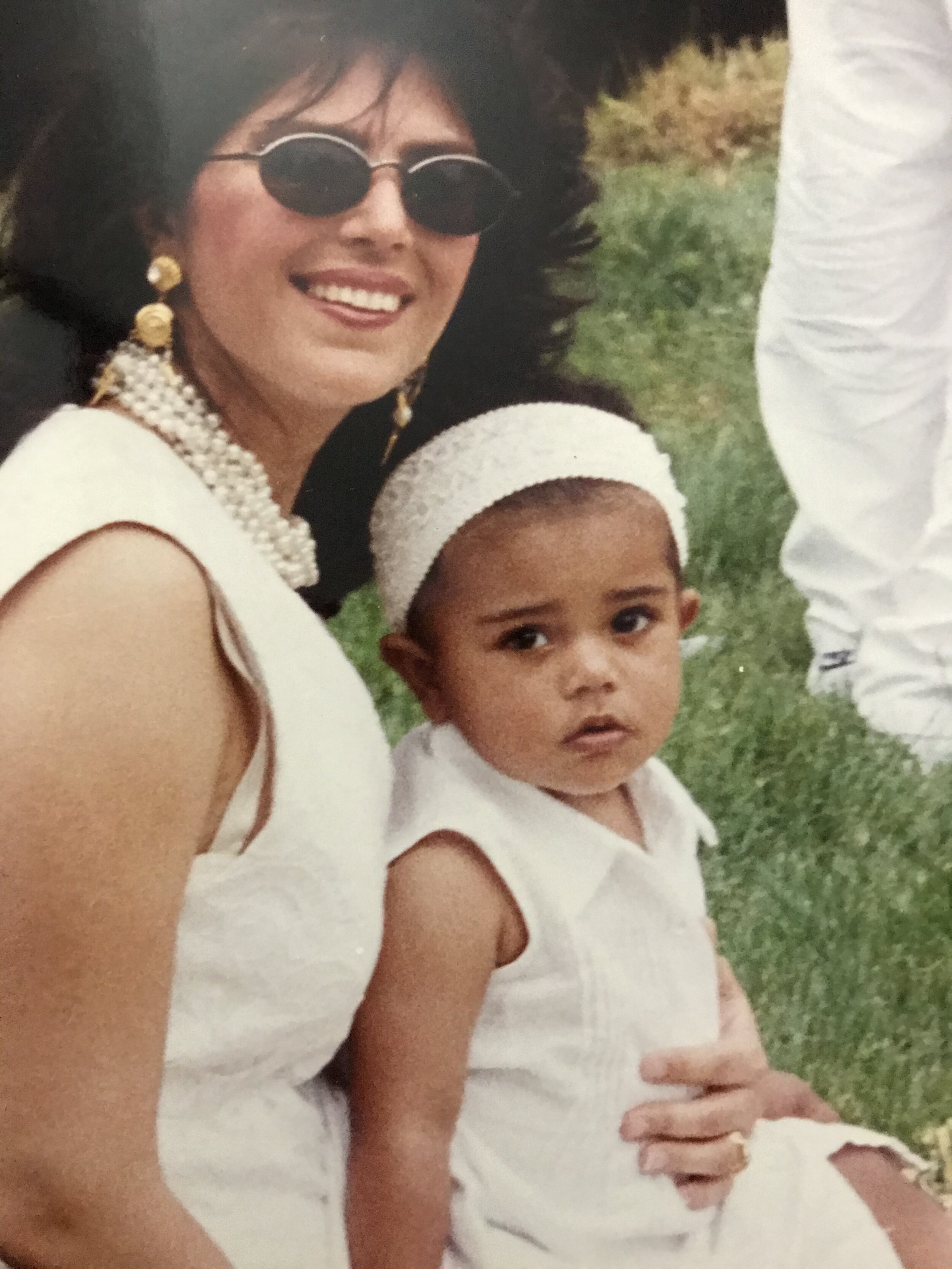Multigenerational Beauty: A Mother and Daughter Talk All SkincareThings
Growing up, my skincare routine was a biweekly glob of moisturizer, if that. I tampered with my mom's mini perfumes, I stole my eldest sister’s blush— but my relationship to all things beauty routine was few and far between. So when I sat down with Arianna Thomas and her mother, Nakta Namazi–Thomas, I was immediately glued to their anecdotes on beauty as a learning tool. As we began to walk through how their beauty routines and relationship to the concept has evolved over time and with each other, the mother-daughter duo painted a crisp picture of how their Persian identities inform their relationship with beauty. It was clear for Nakta that, upon arriving in the U.S from Iran, she wanted to carve a space for certain beauty routines that did not exist here. Beauty services— for both Nakta and eventually Arianna— were the tangible means of maintaining their Iranian roots.
Nakta emigrated from Iran in 1978. “I did not really know how to access services for beauty,” she says to me. Facials, hair removal, and other beauty experiences that were integral to her Persian upbringing were traditionally conducted by professionals. But in the U.S. at that time, there wasn’t a go-to roster of beauty services. “So, myself and a group of my friends, we figured out how to do it all ourselves,” Nakta recounts. “We made a party out of it— we all would do the hair removal thing with a thread. Now, there are places [where] you can go, but back then it was our skill. So you know, I always wanted Arianna to be able to do all of that on her own.” This group of Persian women created a cultural space imbued with self-care and independence. And Arianna witnessed this sense of beauty ritual from a young age. Beauty connected Arianna to her mother’s upbringing in Iran and their Persian heritage as a whole.
“I remember when I was younger, she would walk me down to the bathroom and would thread my face,” she shares of Nakta’s eyebrow care. Threading is a process of hair removal that involves a thin, well, thread that allows for a more defined shape. “Like sewing clothes,” Arianna adds. “For me, since I have hyperpigmentation, [threading] is better because it's not pulling my skin or creating any sort of marked reaction.” The context for detailed attention to eyebrows connects back to Iran. Nakta grew up in the time of the Shah—pre-revolution Iran—when there was no mandate for women to cover themselves. “But before [Shah],” Nakta details of women required to cover in the years preceding the 1941 change in government, “the only thing you could see were our eyes and eyebrows. Iran women are famous for it. That’s why eyebrow care is so important.”
This intentional beauty habit is one of many plucked (pun intended) from Iranian practices. Once a week, Nahkta would walk Arianna through face exfoliation with a clay tool called a ‘sefidab.’ “It’s the only thing I ask for when my mother comes to visit, besides some herbs and cinnamon,” Nakta says of her sefidab dependence. A generational tool, sefidab is another iteration of the Namazi-Thomas family’s celebration of skincare. Along with its physical utility, sefidab is an instrument unique to Iran— as part of Persian roots as the family herbs. “She always says ‘taking care of yourself’ when we do masks, moisturize, do our nails,” Arianna reflects. Rather than being a practice in vanity, these modes of care were a way to maintain the physical as a reflection of internal humility and substance.
“Be it their skin, their size, or their interests, embracing each other’s differences as individuals is second nature for Nakta and Arianna.”
A key part of Nakta’s evolving relationship with beauty stems from her close relationship with Arianna; mothering demonstrated how differences can change how beauty routines translate. “She always lightened up her eyebrows to brighten her face,” Arianna shares. “I’m Black, so it looked silly,” she laughs. Being half Black and half Persian, Arianna’s physical shade difference became a teaching moment for Nakta, literally from age 10. “I was always curious about makeup, so I wanted to try my mom’s foundation,” says Arianna. So, the mother-daughter pair visited the beauty aisle a bit earlier than some. But that’s exactly the environment the two created— one amenable to change and difference. Once again, beauty was a microcosm of their larger relationship. Be it their skin, their size, or their interests, embracing each other’s differences as individuals is second nature for Nakta and Arianna.
As I observed their back-and-forth, I felt honored to be “in” on their beauty secrets. Not only did I get a history lesson on how Iran’s government informed eye makeup and eyebrow care, but I saw the independence of Arianna that I knew so intimately reflected in an intentional motherhood. Skincare was a skillset passed down from Nakta to Arianna, void of conceit and full of validation.









